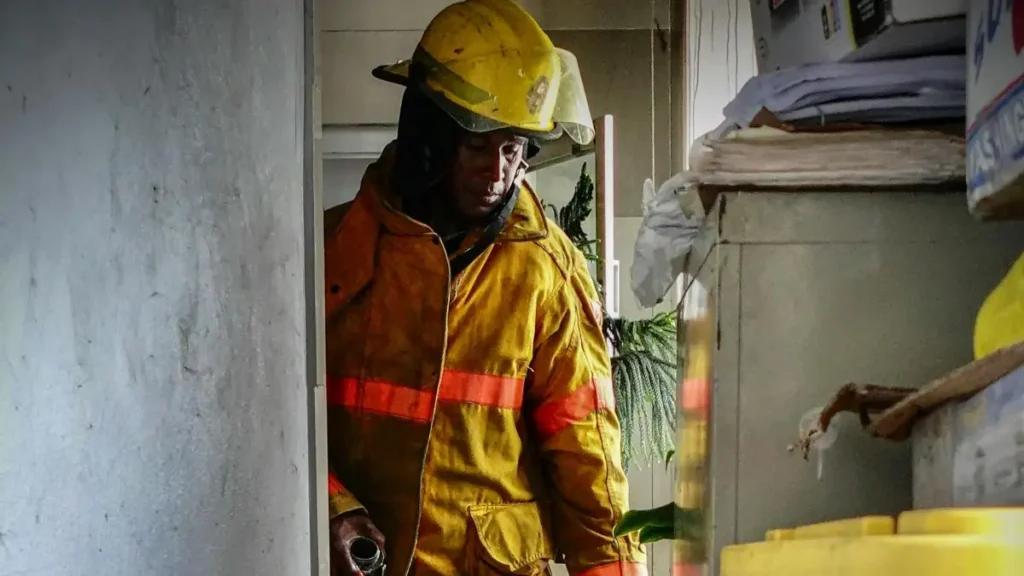Tragic Home Fire in New York Kills Pets, Injures Three Firefighters
I still can’t stop thinking about the heartbreaking news from Great Neck, New York. In the early hours of November 23, a house fire tore through a home on Tobin Avenue, and tragically, two pets lost their lives. Three brave firefighters were injured while trying to contain the blaze, though thankfully their injuries were minor.
You can imagine the chaos of that early morning—alarms blaring, smoke filling the rooms, and pets trapped inside with no way to escape. The homeowners were alerted just in time by their smoke detectors and managed to get out safely.
One of them was treated on-site for minor burns but refused further medical care. Meanwhile, the house itself suffered heavy damage and is currently uninhabitable.
What strikes me most is how quickly life can change in a matter of minutes. Fires like this remind us that our pets depend entirely on us for their safety. And while human injuries are often covered in the news, the loss of beloved animals rarely gets the attention it deserves. This isn’t just a story about a house fire—it’s a wake-up call for anyone with pets at home.
Timeline of the Fire: November 23 in Great Neck

I want you to picture this: it’s 3:20 a.m., the house on Tobin Avenue is quiet, and suddenly smoke detectors go off. According to News12 New York, the fire erupted rapidly, and the occupants were lucky enough to hear the alarms and evacuate on their own. One man was briefly treated for superficial burns but declined further medical attention.
Meanwhile, firefighters were already racing toward the scene. Within minutes, they faced a home engulfed in flames, with the fire spreading through the attic. They stretched multiple hand lines to control the blaze while additional teams arrived to support the operation. By the time the fire was under control, two pets had tragically perished, and three firefighters had sustained minor injuries.
Reading through the timeline makes me realize how fast things can spiral out of control. The combination of early-morning timing, fast-moving fire, and pets trapped inside created a situation where every second mattered.
And it’s a stark reminder: smoke detectors don’t just save human lives—they can make the difference for our furry friends too.
Fires like the one on Tobin Avenue remind me of other incidents, like the Pulaski home fire that left a couple homeless and their pets dead, showing just how quickly emergencies can escalate.
Understanding the Damage and Pet Vulnerability
Looking at the fire from a structural perspective, the official Facebook post from the Manhasset-Lakeville Volunteer Fire Department provides more detail about the blaze.
The fire started at the rear of the home and extended into the attic, creating a “large volume of fire” that required multiple alarms and additional local fire departments to respond. The house sustained heavy damage and is now uninhabitable.
As I read the report, I couldn’t help but think about the pets trapped inside. Unlike humans, pets can’t follow instructions or escape on their own. They often hide during fires, making it harder for them to survive.
Smoke inhalation can overwhelm them in minutes. Seeing the official fire response highlighted how even experienced firefighters struggle to rescue pets in a fast-moving fire, especially in early-morning incidents like this one.
Unfortunately, incidents like this are not unique—homes like the one in Massachusetts that was destroyed by fire show how extensive damage can leave families and pets displaced, even when no one is seriously hurt.
How Firefighters Handle Pets During a Fire?
If you’ve ever wondered how firefighters deal with pets during emergencies, this case sheds some light. Their priority is always human life first—but they do try to rescue animals whenever it’s safe. FAST teams and second-alarm responses, like in this fire, give firefighters more manpower and resources to attempt rescues.
Even so, sometimes, despite everyone’s best efforts, pets can’t be saved. That doesn’t mean the loss isn’t felt deeply by the firefighters, who often have a special bond with animals and understand the grief their human neighbors will experience.
Knowing this, I feel it’s important for us as pet owners to do everything possible to prepare our homes and pets before disaster strikes.
Fire Prevention and Pet Safety at Home

Here’s where I want to shift the focus from tragedy to practical steps you can take. Fires like this are a harsh reminder that pets are entirely dependent on us for their safety.
- Smoke detectors: Place them near bedrooms, common areas, and anywhere your pets spend time. Test weekly.
- Pet escape plan: Keep leashes, carriers, or crates near exits. Practice guiding your pets to safety.
- Safe zones: Train your pets to go to a designated area in emergencies.
- Emergency records: Keep photos, medical records, and microchip information easily accessible.
- Post-fire care: Even rescued pets can suffer smoke inhalation or trauma; always consult a vet after a fire.
These steps aren’t just nice-to-have—they can literally save your pets’ lives. And as someone who loves animals, I can’t stress this enough: preparation is everything.
If you want quick fire-safety tips and emergency reminders delivered straight to your phone, there’s a handy resource sharing practical alerts and updates through WhatsApp—it’s a simple way to stay prepared every day.
Lessons from the Great Neck Fire
So, what can we learn from this heartbreaking fire? First, early alerts save lives. The homeowners were able to escape thanks to functioning smoke detectors, which shows that simple precautions can prevent human tragedy.
Second, community awareness matters. Firefighters from multiple local departments collaborated to control the fire, but neighbors and communities can also help by checking on elderly or vulnerable pet owners and sharing safety tips.
Finally, emotional awareness is key. Pets are family. Losing them is devastating, and preparing for emergencies isn’t about paranoia—it’s about responsibility.
After reading the report, I realized this fire isn’t just another news story. It’s a reminder for anyone with pets to take proactive steps to protect the ones we love most.
Broader Context: Pet Safety and Home Fires in the U.S.
Reading about the Great Neck fire makes me wonder: how often do pets face this kind of danger? Unfortunately, incidents like this aren’t isolated. Across the U.S., thousands of pets are injured or killed in home fires every year. From single-family homes to kennels, fires move quickly, and animals often have no way to escape.
One recent example: a New York kennel fire claimed over 40 dogs, highlighting how vulnerable pets are even when humans are nearby. Time of day, lack of detectors, and multiple animals in confined spaces all increase risk.
It’s not just about awareness—there’s also a legal and insurance side. Some fires are intentional, leading to arson or animal cruelty investigations. In other cases, homeowners may not realize their insurance could cover pet fatalities, especially if you keep emergency records and photos. Understanding these realities helps you plan better and protect your pets before tragedy strikes.
Fires happen everywhere—from Indiana homes where residents escaped unharmed to New York—highlighting that awareness, preparation, and prevention are critical no matter where you live.
Final Takeaways for Pet Owners
If there’s one thing I want you to take from this, it’s that preparation can make all the difference. Early alerts, escape plans, and quick access to emergency supplies can save lives—both human and animal.
Ask yourself: do your smoke detectors cover every room your pets frequent? Do you have leashes, crates, or carriers ready for a fast exit? Could you guide your pets safely in the middle of the night? Taking these small steps now can prevent heartbreak later.
And here’s something I always tell friends: talk to your neighbors about pet safety too. Community awareness saves lives, and sharing tips might help someone else avoid a tragedy like the Great Neck fire.
So I’ll leave you with this question: when was the last time you reviewed your home fire plan for your pets? If it’s been a while, take five minutes tonight and walk through it—you’ll be glad you did.
For more stories on home safety and tips to protect your loved ones—including pets—visit our Home Incidents category. You’ll find expert advice and real-life examples to help you stay prepared.
Disclaimer: This article is for informational purposes only and is not a substitute for professional veterinary, legal, or fire-safety advice. Always consult certified experts for emergency situations involving pets or property. The author and publisher are not responsible for any outcomes from following the information provided.


